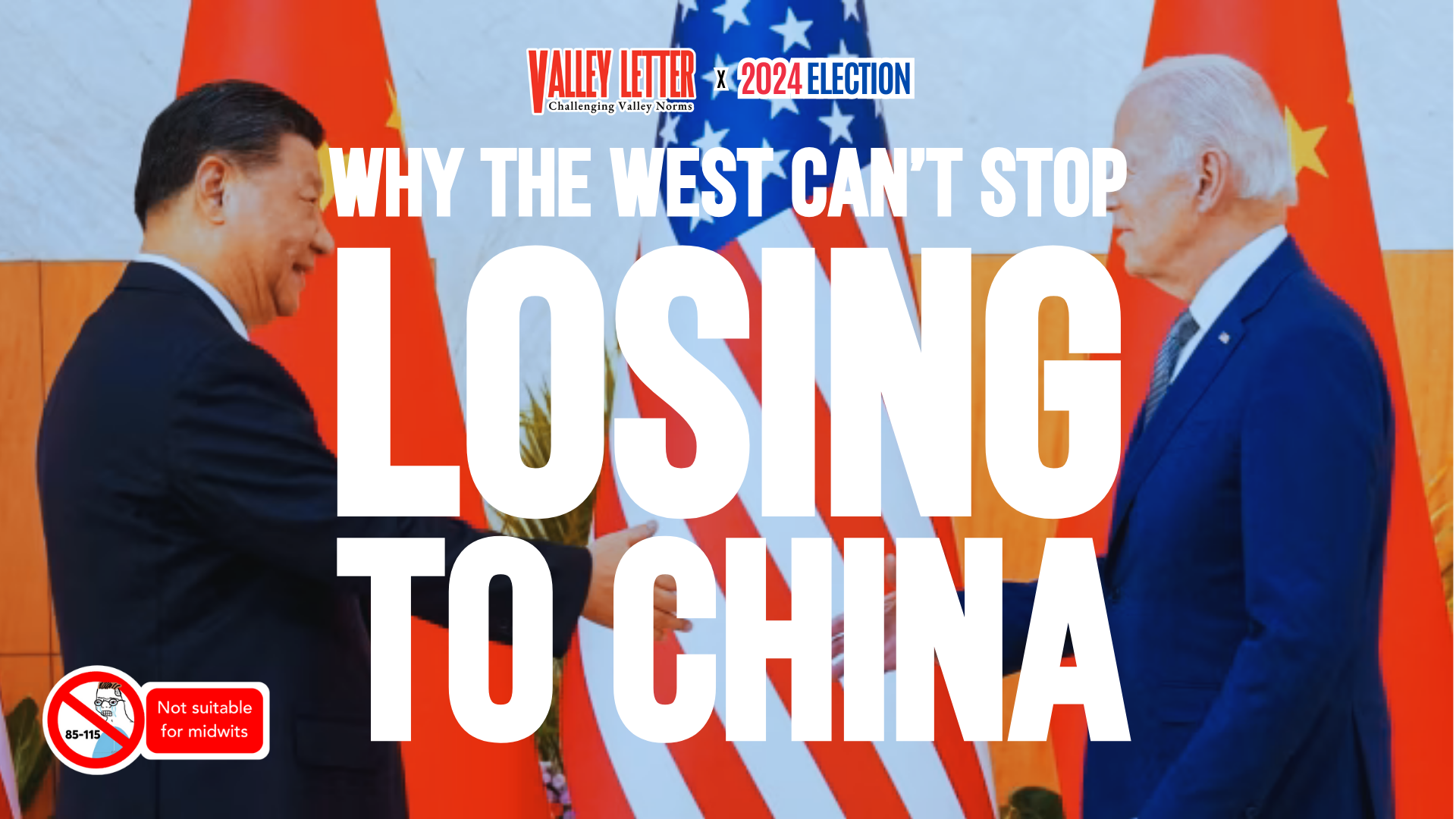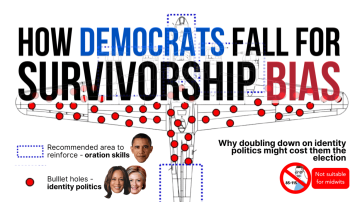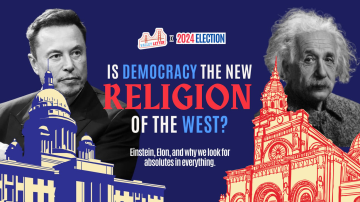In the run-up to the 2024 election, we’re doing things a little differently here at Valley Letter. For the six weeks leading up to the election, we’ll be diving into the political scene in Silicon Valley, exploring everything from alternative systems of government to specific policy pitches from the likes of Peter Thiel, Sam Altman, and Ben Horowitz.
In a disillusioning two-party system, expand your mind with these bold ideas that cross party lines and question everything we think we know about politics in America.
Imagine a government that is constantly incomplete. A government that, by design, is disassembled every few years and rebuilt with new objectives, new strategies – and that then spends half it’s time undoing the moves of the previous incumbents.
Welcome to the American Adhocracy.
In a single year, the average American might be asked to vote in congressional elections for both the House and Senate, the Presidential election, and for state representatives, state governors, county executives, city mayors, state and local judges, and special district board members. It’s a complex tangle of roles that are constantly being appointed and reappointed, with no clear through line except the vague dogma of the incumbent party which itself rarely survives more than two election cycles.
One of the greatest strengths of Empire is its capacity for continuity. A long-term plan can be set in place that does not have to bow down to the short-term whims of the electorate. Goals can be envisioned on the kind of scale the US government can only dream of, thinking five, ten, or even fifty years ahead.
China is one of the last vestiges of this grand tradition of continuity. Next year, the CCP will begin its fifteenth consecutive Five-Year Plan, a set of blueprints that have formed the foundation of the country’s development since 1953.

But has this long-term planning really led to China outperformed the US? Let’s compare the countries across five key metrics: economy, crime rate, education, poverty, and global influence.
Economy
The economy is typically the first metric we turn to for a benchmark on a country’s success. While over 60% of countries – almost all countries excluding Europe – believe the US to have superior economic power to China, the hard numbers indicate the opposite.
In terms of Purchasing Power Parity (PPP), which compares the real-world value of a country’s wealth, the Chinese economy is 23% larger than America according to the UN’s International Monetary Fund (IMF).
The IMF also shows economic growth in China over the past decade to have consistently been 2.5 – 3% higher than in the US. It has maintained its title as the world’s largest exporter since 2009, exceeding the US last year by around $500 billion. And China’s share of global GDP growth over the last decade has been a whopping 30%, compared to America’s 8.8%.

Poverty
On the other side of the coin is poverty, a metric that combines economic prosperity with quality-of-life. One of the biggest and most widely publicized accomplishments of the CCP is bringing 800 million people out of extreme poverty to date, at a current rate of between 10 and 14 million people per year according to the World Bank. This leaves only 0.04% of China’s population below the poverty line today; President Xi continues to call the alleviation of poverty his “most important task.”
In the United States, over 10% of the population lives below the poverty line, and the US Census estimates that over 20% of Americans have relied on government assistance like unemployment benefits or Medicaid.

Crime
Another indicator of both economic prosperity and quality-of-life is crime rates. The US has an overall crime rate 3x higher than China, with 4x more murders and 8x more burglaries. Interestingly, although China is widely seen as less progressive than the US with fewer codified civil liberties, the US also has 1.5x more hate crimes than China.
Education
On the other end of the spectrum is education, a field China is known for excelling in. China operates the world’s largest state-run education system, with over 500,000 educational institutions and around 19 million teachers. In PISA, the global program that compares the reading, math and science skills of 15 year-olds around the world, China ranked first in 2019 across all three categories, while the US placed 13th for reading, 18th for science and a shocking 37th for math.
Influence
For a final, big-picture perspective, let’s consider the global influence of the two countries.
While America is generally seen more positively on the world stage than China, with 54% and 40% approval ratings respectively, China is viewed as having a more positive impact on global economies by 48% of countries versus 42% who believe the same of the US, according to Pew Research Center.
Additionally, 66% of countries surveyed believe that China’s international influence is growing stronger, opposed to just 32% who say the same of the US. Strategies such as the Belt and Road Initiative have further consolidated China’s lead, with 147 countries accounting for ⅔ of the global population signing on to or expressing interest in such projects with China.

By many metrics, China surpasses America by leaps and bounds. But could we replicate some of China’s successes while maintaining our freedom?
Democracy in Empire
It goes without saying that China is under an authoritarian regime. The country ranks 148th out of 167 countries in The Economist Democracy Index (for comparison, the US is 29th). However, its pretences of democracy can still present a blueprint for what a democratic American Empire might look like.
There are five levels to China’s National People’s Congress, two of which are elected by ordinary Chinese citizens, albeit from a list of candidates pre-approved by the CCP. The most local form of government, village committees, do not require candidates to be approved by the CCP and are thus elected democratically.
In addition, China’s two special administrative regions, Hong Kong and Macau, and five autonomous regions possess a high level of autonomy with varying degrees of democratic freedom.

When carried out with true protections for regional-level democracies, a system such as China’s could follow an overarching, long-term objective while maintaining a representative electoral foundation to guide day-to-day decision-making and resolve regional concerns. In the autonomous region of Tibet, for example, the provincial People’s Government is headed by an ethnic Tibetan and exercises at least partial control over the region’s policy on education and language, ethnic affairs, housing and urban-rural development, transportation, tourism and culture.
The American Empire
In practice, the US governmental system is not so different from China’s – at least, not for over 3.5 million of its citizens.
These are the inhabitants of America’s territories: American Samoa, Guam, the Northern Mariana Islands, Puerto Rico, and the U.S. Virgin Islands. The territories exercise some autonomy and operate elections for regional governments that can determine policy on issues like agriculture, land management and parks and recreation, while ultimately falling under federal US jurisdiction.
While some US territories have expressed discontent at their relationship with the continental US, particularly regarding lack of representation at the federal level, other states have willingly entered a similar relationship under the Compacts of Free Association. The Marshall Islands, Palau, and three sovereign states of Micronesia operate largely independently of the US but with access to many US domestic programs like FEMA, Medicaid and the US Postal Service alongside military protection. Other countries such as Kiribati and Nauru are currently considering entering into a similar relationship with the US.
The American Empire is alive and well.
A democratic Empire is a virtually untested model, but that does not mean it is unfeasible. George Washington famously said that “the establishment of our new Government seemed to be the last great experiment, for promoting human happiness” – but perhaps we have the capacity for one more great experiment.
America has never needed a unifying mission more than it does right now. And until we can escape the Adhocracy, the Chinese Empire will continue to dominate.








